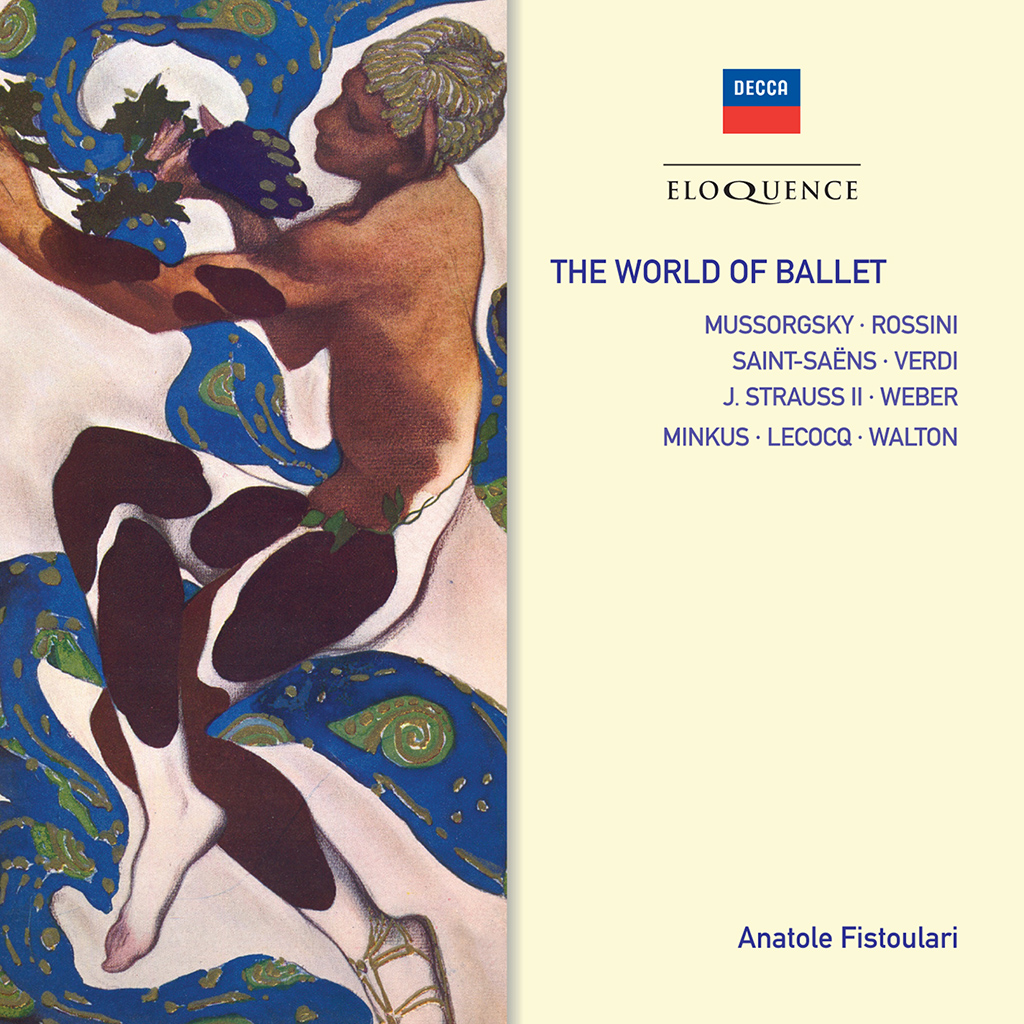
The music on this pair of CDs falls into one of two categories: ballet music from an opera, or ballet music that was not originally intended for dancing at all, but that was subsequently adapted for that purpose. (The exception is Don Quixote, a full-length ballet with an original score.)
Many famous conductors had unusual lives, but the life of Anatole Fistoulari (1907-1995) was more unusual than most. When he was just seven, he conducted a performance of Tchaikovsky’s Sixth Symphony in his native city of Kiev. At thirteen, he conducted Saint-Saëns’s Samson and Delilah in Bucharest. While a young man, he travelled throughout Europe and North America, accompanying bass Feodor Chaliapin and conducting the Ballet Russe de Monte Carlo. Escaping the European mainland in World War II, he came to England, where he soon married Gustav Mahler’s sole surviving daughter, Anna, and was named principal conductor of the London Philharmonic Orchestra. He became a British citizen in 1948. Under a reciprocal arrangement between Decca and RCA, the Verdi, Mussorgsky, Saint-Saëns and Rossini items – all ‘opera-ballets’ – first appeared on RCA in 1960. Their first Decca release (under the title ‘The World of Ballet’) was not until 1972. Likewise, the Lecocq and Walton items were published in 1959 by RCA but in 1971 by Decca.
CD1
1 VERDI: Aida: ballet music
2 MUSSORGSKY: Khovanshchina: Dance of the Persian Slaves
3 SAINT-SAENS: Samson et Dalila: Bacchanale
4 ROSSINI: William Tell: ballet music
5-13 J. STRAUSS II/DORATI: Graduation Ball
CD2
1 WEBER/BERLIOZ: Invitation to the dance
2 MINKUS: Don Quixote: Pas de deux
3-8 LECOCQ: La fille de Madame Angot: ballet music
9-18 WALTON: Facade: suites.
Paris Conservatoire Orchestra (CD1: 1-4)
New Symphony Orchestra (CD1: 5-13, CD2: 1-2)
Orchestra of the Royal Opera House, Covent Garden (CD2: 13-18)
Anatole Fistoulari
Recording Producers: Ray Minshull (Verdi, Mussorgsky, Saint-Saëns, Rossini); John Culshaw (J. Strauss II, Weber, Minkus); Michael Williamson (Lecocq, Walton)
Balance Engineers: Kenneth Wilkinson (Verdi, Mussorgsky, Saint-Saëns, Rossini, J. Strauss II, Weber, Minkus); Ken Cress (Lecocq, Walton)
Recording Locations: Kingsway Hall, London, UK, July 1953 (J. Strauss II, Minkus), November 1953 (Weber); Watford Town Hall, London, UK, September 1957 (Lecocq, Walton); La Maison de la Chimie, Paris, France, November 1958 (Verdi, Mussorgsky, Saint-Saëns, Rossini)
‘Well turned performances, well recorded … An enjoyable record.’ (Lecocq, Walton) Gramophone
‘I soon found my attention held with delight. This is Strauss as Strauss is played in Vienna.’ (Strauss/Dorati) Gramophone
